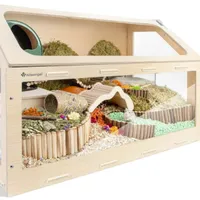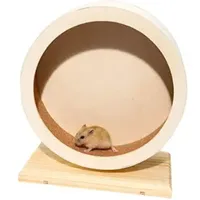Our vet explains why hamsters bite their cage and what you can do to help
If your hamster is biting their cage, you’ll want to read on. We’ve got some possible causes and solutions that can help.

Has your hamster been biting theor cage? While you may think this is a normal behavior due to all the chewing these tiny fur balls love doing, you need to think again. While yes, the constant gnawing and chewing is a normal behavior for hamsters, as it helps grind their teeth down to the right length, chewing on their cage can be cause for concern.
A hamster could be biting their cage due to stress, anxiety, or frustration. If a hamster is living in a cage that is too small, for example, this could lead to a very unhappy hamster and they might bite their cages for this reason. You can read up on ways to help a stressed hamster.
Or if they don’t have enough stimulating material in their cage to chew, this could be another reason for your hamster to be frustrated. You can prevent this by investing in one of the best hamster cages and stocking it with some of the best hamster toys.
Dr. Rebecca MacMillan goes into more detail about the possible reasons your hamster is biting their cage, let’s take a look.
Why is my hamster biting their cage?
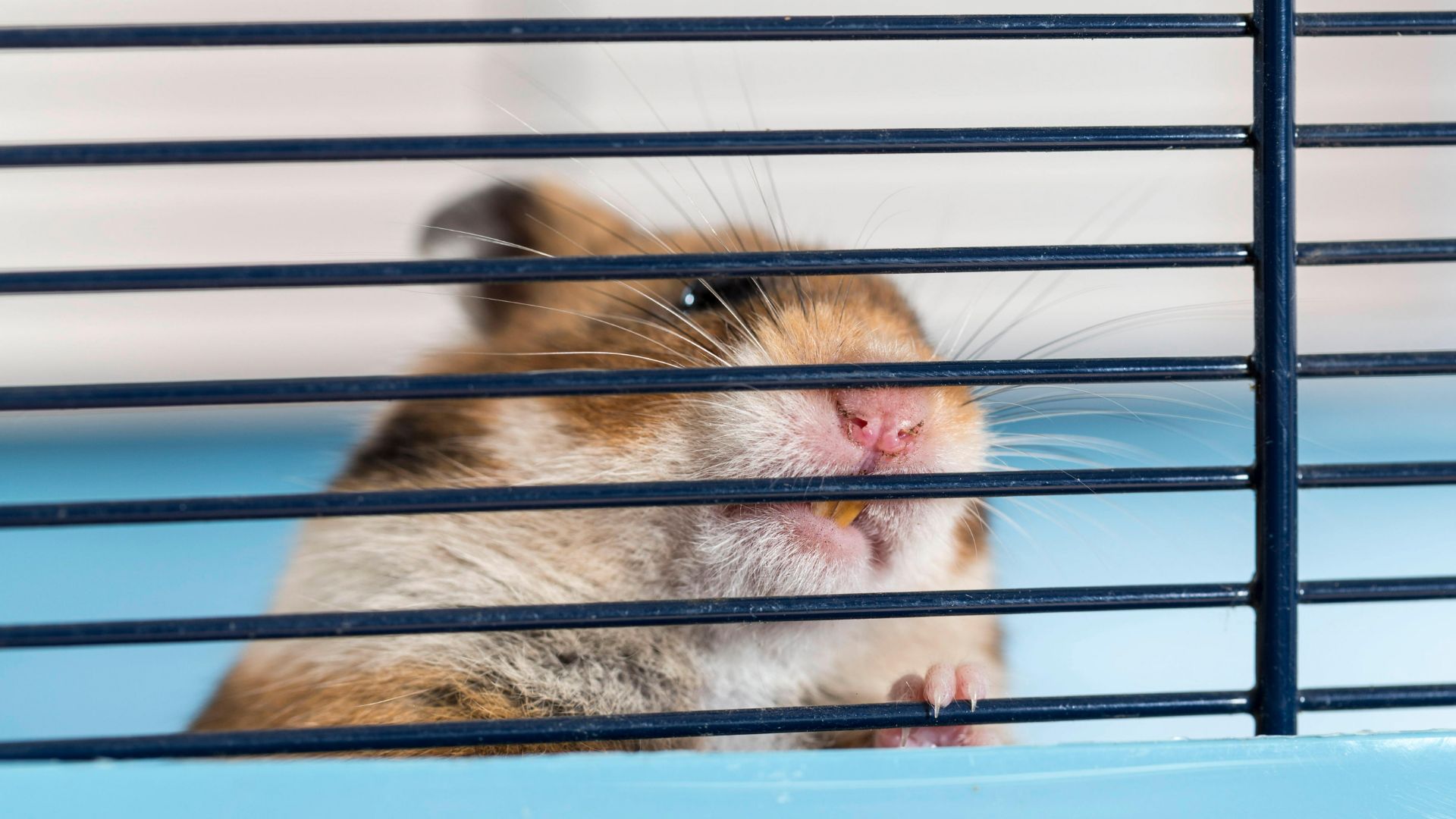
While biting is a natural behavior for hamsters, it won’t distinguish between things it should gnaw at and things it shouldn’t, such as its cage. So if it is biting its cage, you’ll want to find out the reason so you can find a solution.
You may ask yourself why you need to stop your hamster from biting its cage. The main reason is that this can lead to broken, cracked, or damaged teeth, or worse, painful mouth infections or injuries. Depending on the type of cage you’ve bought, the metal or paint could be toxic to your pet if ingested. You don’t want your hamster to be stressed, bored, or unhappy as this could result in other health issues. Plus, it could be trying to escape – something you definitely don’t want.
Reasons hamsters bite their cage
Boredom
Get the best advice, tips and top tech for your beloved Pets
If your hamster is biting its cage it may be bored or looking for a bit more attention from you. You’ll need to make sure your pet is getting enough mental and physical stimulation. This means providing it with a big enough cage so it has enough space to exercise, lots of enriching toys, and ensuring you are making time to play with them.
It may depend on the species of hamster you have, but you’ll want to know how big a hamster cage should be to ensure your hamster has enough space. Generally, we’d recommend 40in x 20in x 20in of unbroken floor space. If you change their cage and they’re still biting the bars, try a glass aquarium tank.
This deluxe hamster cage will keep your hamster happy and cozy. It is spacious enough to keep all their favorite toys and equipment, while still giving enough room for burrowing and playing.
If you want to make sure they’re getting enough exercise, let your hamster out of its cage at least three times a week (although once every 24 hours is recommended). This should be in an enclosed area that has been hamster-proofed – remove any electrical cords, clear the space and close off any holes or escape routes. You need to spend time with your hamster.
If you’re taking them out of the cage, go gently so they don’t feel like you’re invading their space. Offer up your hands for a nibble and use both hands to carry them out or use a small bowl or box that they can choose to climb into. Dr. MacMillan says, “Rough handling could be triggering them into a state of anxiety… You must also check that young children are holding the hamster appropriately; handling should always be supervised.”
When you’re not around to play, make sure they have lots of safe items to chew and play with. Wooden toys are particularly good such as ladders, houses and blocks, or rodent chew or food blocks. A hamster wheel or exercise ball inside their cage is a great way to let them exercise, but don’t put it in direct sunlight and only let them use the ball for 15 minutes at a time.
A hamster wheel that makes no noise? Yes, please! This wheel is silent allowing your hamster to run as much as they’d like without adding any extra noise. It’s also made of durable wood, safe for chewing and gnawing on.
Stress
Stress could be another reason why your hamster is biting its cage. Have you noticed any changes in its behavior? Again, it could be stressed if its cage is not big enough, if it isn’t happy with its bedding (cedar and pine bedding may irritate its lungs and skin), or if it doesn’t have enough toys to keep it occupied.
“Hamsters are a prey species and may feel threatened by cats or dogs around, so try and keep them separated… (the cat staring at their cage all day!) could be triggering them into a state of anxiety,” says Dr. MacMillan. You may want to look at the placement of the cage. If it’s by a window, birds could be making your furry friend nervous, or on the ground that big cat could look more menacing. Create a quiet environment where they’ll be happy.
Are you waking your pet up during the day to play or clean its cage? This is not a good idea. Hamsters are nocturnal mammals so you could be causing them upset by disturbing their sleep.
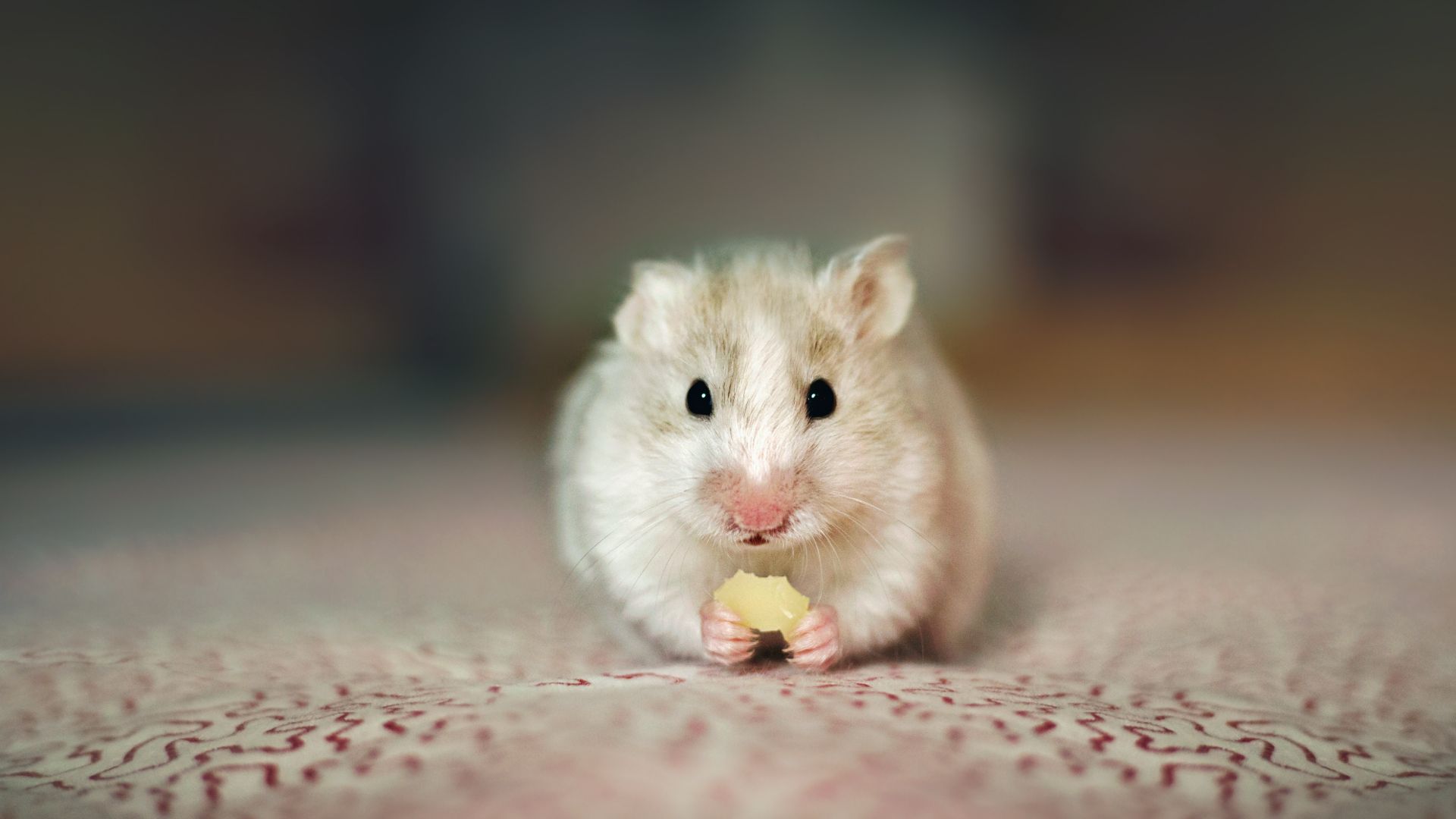
Managing teeth growth
Hamsters need to chew to stop their teeth from growing too long, but sometimes the food you give them isn’t enough to keep their gnashers busy. If they’re biting their cage to try and manage tooth growth the behavior is healthy – just not the material they’re using. You can solve this by giving your hamster untreated, oil-free, paint-free wood to chew on. Wood from an apple or pear tree is ideal, but avoid cedar or pine as the oils in these can be toxic to your pet. If the wood isn’t working alone, try rubbing it with apple or carrot for taste or another alternative is hard-shelled nuts.
Dog treats, such as a hard biscuit once a week, can also be used. Just ensure you’re buying garlic-free treats as treats with garlic which are one of the foods hamsters shouldn’t eat, as it can cause digestive problems. If you have some extra cardboard around the house, such as an empty toilet paper or paper towel roll, this will work as a chew toy too. You can cut holes in it to show your hamster it’s for gnawing and this will not only help with their teeth, but it will provide added stimulation.
Chewing for pleasure
As well as looking after their teeth, chewing is also fun for hamsters. If this is the case, follow the same advice so that they are still able to enjoy chewing, but staying safe at the same time. Try to avoid feeding them through the cage bars as this may worsen the problem.
What is hamster cage rage?
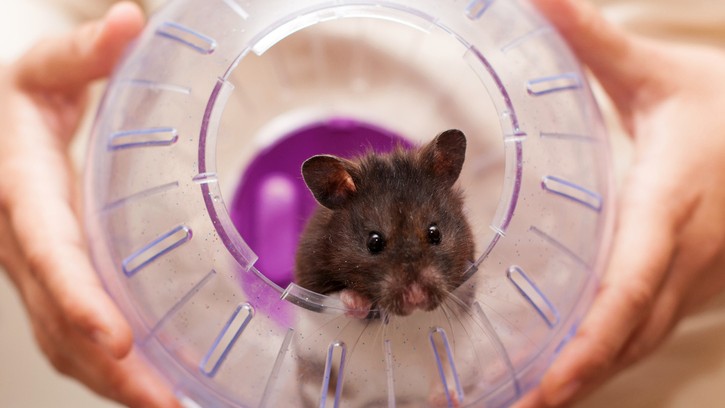
What is hamster cage rage?
If your hamster is biting its cage, you don’t necessarily need to worry. However, if they’re showing increasing changes in behavior, they could have hamster cage rage, so it’s important to be aware of this. Hamster cage rage is a serious psychological condition, which can cause your hamster emotional and physical harm.
It is caused when their living conditions are unsuitable, so if their cage is far too small, leading to excess stress and the disorder can result in lasting damage to your pet including a decreased lifespan. While the condition can affect all species, it affects Syrian hamsters in particular due to their size.
How to avoid hamster cage rage and stress
Once you’ve established why your hamster is chewing the bars on its cage, you can work on stopping this behavior. As you have already read, depending on the reason, there are lots of solutions from buying a bigger cage to providing your hamster with lots of toys and attention and ensuring they have a safe and happy environment. If none of these solutions work, you could try a bite deterrent spray. This is sprayed on the bars to stop your hamster from being tempted. Just make sure you take them out of their cage to apply it and make sure it’s dry before returning them inside.
Does my hamster have cage rage?
So how can you tell when your pet has this disorder? If your hamster is just biting its cage bars, it may be fine, but if its behaviour becomes excessive and frenzied, it could be something else. Hamsters don’t usually bite unless you’ve done something to upset them, so if they start to bite you more or become aggressive, lunging or attacking without warning and guarding the cage doors, this could be cage rage.
They may show repetitive, agitated behaviour such as shaking, racing, pacing or climbing around their cage for long periods. They may spit, squeak or squeal making it difficult to feed or handle them or clean the cage out. Other symptoms include changes in their sleep patterns, urinating and drinking more frequently, destroying their toys or bedding and hoarding food.
Found this helpful? Check out how to set up a hamster cage and surprising things hamsters can eat.
